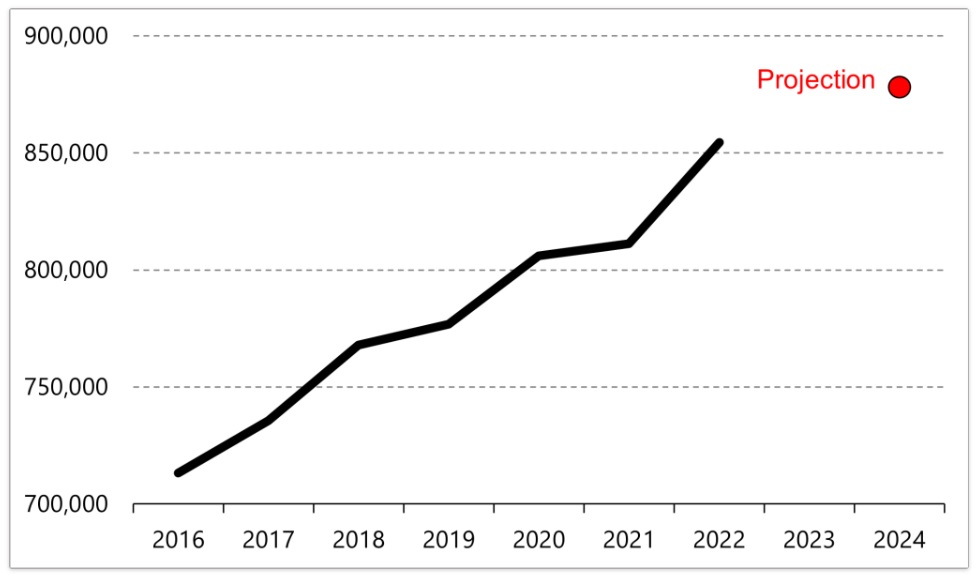
BOISE, ID – New short-term employment projections from the Idaho Department of Labor show Idaho’s healthy rate of job creation is expected to continue over the next two years. Total employment in Idaho — including self-employed and family businesses — reached a new high of 854,474 in the base period in 2022. This is projected to grow by 1.4% annually, reaching 878,100 in 2024.
From Idaho Department of Labor:
The robustness and consistency of Idaho’s labor market have been a shining light in past years, with the state consistently leading the country in job growth. In 2020, COVID-19 led to significant job losses in a very short period of time — with almost all job losses occurring in March and April, but Idaho demonstrated its economic vitality with a quick rebound, returning to rapid job growth the following year. In fact, job growth in Idaho has been so strong that, even with the setback in 2020 during the pandemic, total employment in 2022 still reached and even exceeded forecasts.
Many signs continue to indicate strength in Idaho’s labor market going forward, including low unemployment levels, high levels of in-migration, high levels of job openings and high wage growth. These factors, combined with ongoing inertia in the labor market, offer confidence that Idaho will continue along this strong growth path in the coming years.
Job growth is not expected to be distributed equally among industries in Idaho. The fastest-growing industries are projected to include Information (+2.8% annually), construction (+2.5%) and transportation and warehousing (+2.4%). Health care is again expected to account for the most net new jobs, with 4,098 new jobs projected (+1.8% per year).
These patterns of growth are closely tied to two broad economic trends: namely, the growth and aging of Idaho’s population – and a continued shift towards e-commerce.
Idaho’s rapid population growth continues to strain the state’s housing supply. The need for new housing leads directly to high growth in both construction and real estate services. Both industries have high growth projections. Furthermore, the aging of Idaho — with 65 and older residents making up most of the state’s population growth — leads to higher demand for health services and corresponding growth in health care.
Simultaneously, American consumption continues to shift increasingly towards online purchasing and away from brick-and-mortar retail. Accordingly, the growth projection for retail trade in Idaho is relatively low —only 0.7% per year, well below the overall growth rate. Meanwhile, transportation & warehousing is relatively high (+1.7%). This is mostly due to the overall economic shift towards distribution and delivery services through e-commerce growth.
While many have questioned whether the national economy is heading for turmoil – pointing to issues like stubborn inflation, rising interest rates,
and inverted yield curves (when long-term interest rates are less than short-term interest rates) – the labor market continues to be a point of major strength, and this is particularly the case in Idaho.
Unemployment remains around record-low levels in most of the state, while hiring activity remains strong. In the short-term, Idaho’s labor market is showing nothing but strength and dynamism. If anything, the market is most likely to suffer from a lack of workers, rather than a lack of job creation. The state’s recent record of strong job growth and economic resilience can give residents and workers confidence in the economic future of Idaho.

Total employment in Idaho 2016-2022, with Idaho Labor 2024 projection


